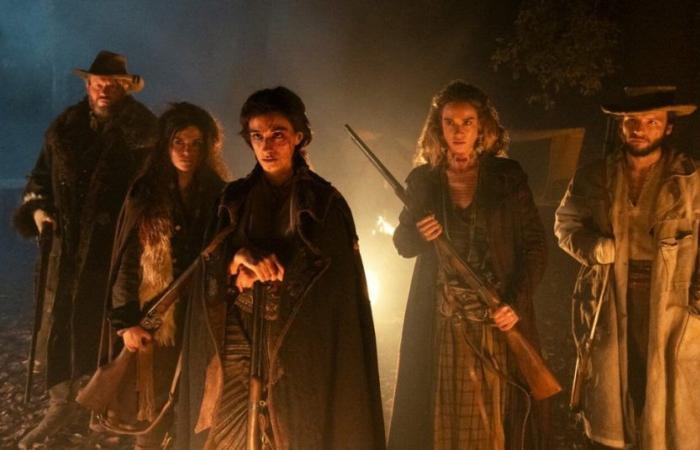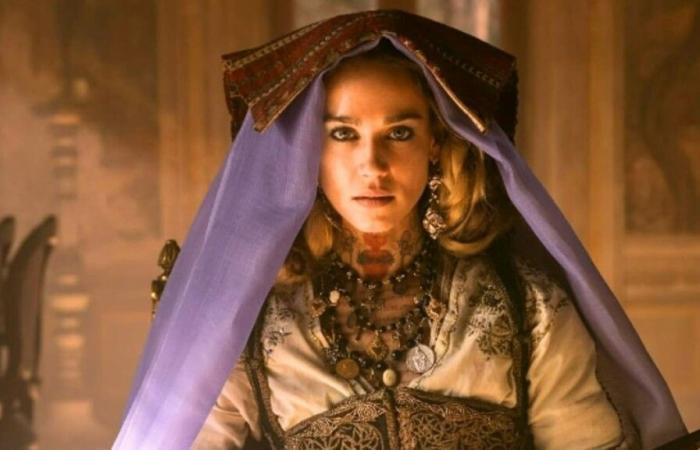Their quest for gold puts them on a collision course with numerous government forces.
Co-written and co-directed by Antonio Le Fosse, the series delves into a lesser-known period in Italian history.
While On the Gold Route tells a fictional story, but is based on historical incidents and figures from Italy’s post-unification period. The legends of real bandits of the time inspire all of the main characters in the series.
Its fascinating story was written by Antonio Le Fosse, Giacomo Mazzariol, Marco Raspanti, Re Salvador and Eleonora Trucchi.
The real story of On the Gold Route
The post-unification period in Italy refers to the time after the Risorgimento, the movement for Italian unification in the 19th century. Before unification, Italy was divided into several independent states and territories governed by various foreign powers and local rulers. The Risorgimento, led by figures such as Giuseppe Garibaldi and Count Camillo di Cavour, aimed to unite these disparate regions into a single unified state.
However, the lands in the south of the country have always been more anarchic due to historical factors and were famous for the practice of banditry.
After the successful unification of Italy in 1861, the newly formed Kingdom of Italy faced several challenges, including political instability, economic difficulties, and social unrest.
The unification process left many regions and communities marginalized and without rights, leading to widespread discontent and resistance. This was especially true for the poorer southern lands, which were already being ravaged by roving gangs of bandits. However, with resistance to the government, which they saw as occupiers, many bandits became a symbol of political resistance and independence.
These figures and groups began to wage guerrilla warfare with the kingdom’s forces and, at times, also fought other criminal elements, as seen in the series. During this period in the country’s history, many of those who took up arms against the regime were called bandits, regardless of their motives. Thus, the term brigandage covers a wide range of activities, from petty theft and robbery to organized resistance movements that fought for political or social change. Bandits often operated in remote rural areas, using the rugged terrain to their advantage and evading capture by government forces.
On the Gold Route is inspired by the legends and stories of legendary bandits who rose to prominence during Italy’s post-unification period. These figures, both men and women, became symbols of resistance and rebellion against the perceived injustices of the time. As highlighted by the Netflix series, female bandits also played an important role in the resistance movements of post-unification Italy.
The series also takes a lot of inspiration from the historical Robin Hood figure of the time, Pietro Monaco, and his wife, Maria Oliverio or Ciccilla. A soldier and officer in the Bourbon army, Pietro Mônaco abandoned his post and became involved with the Brigandria after witnessing the corruption of local landowners. His wife, Maria Oliverio, was arrested for luring or blackmailing Monaco. After her release, Maria joined Pietro’s gang, which operated in Calabria.
Motivated by a feeling of injustice and a desire for revenge against the governing authorities, Monaco began to lead a life of crime and banditry. His briganti began targeting wealthy landowners, merchants, and government officials, robbing them of their valuables and often kidnapping high-level officials for ransom.
Brigandessa Ciccilla is said to have led many of the group’s operations, which involved the kidnapping of cousins Achille Mazzei and Antonio Parisio in Santo Stefano, which resulted in a huge ransom amount.
Another sensational incident was the kidnapping of nine high-ranking men, including clergy, nobles and the bishop of Tropea.
The lives of Monaco and Ciccilla were chronicled in the Italian film “Brutta Cera”. The Briganti are often recognized as symbols of political resistance and resilience in Italy and have inspired several novels and films, including Netflix’s “Brigands: The Quest for Gold.” The show recreates Italy’s post-unification era and sensationalizes the stories of legendary bandits, presenting them in a cleaner image compared to their real-world counterparts.
Na Rota do Ouro is available on Netflix.







